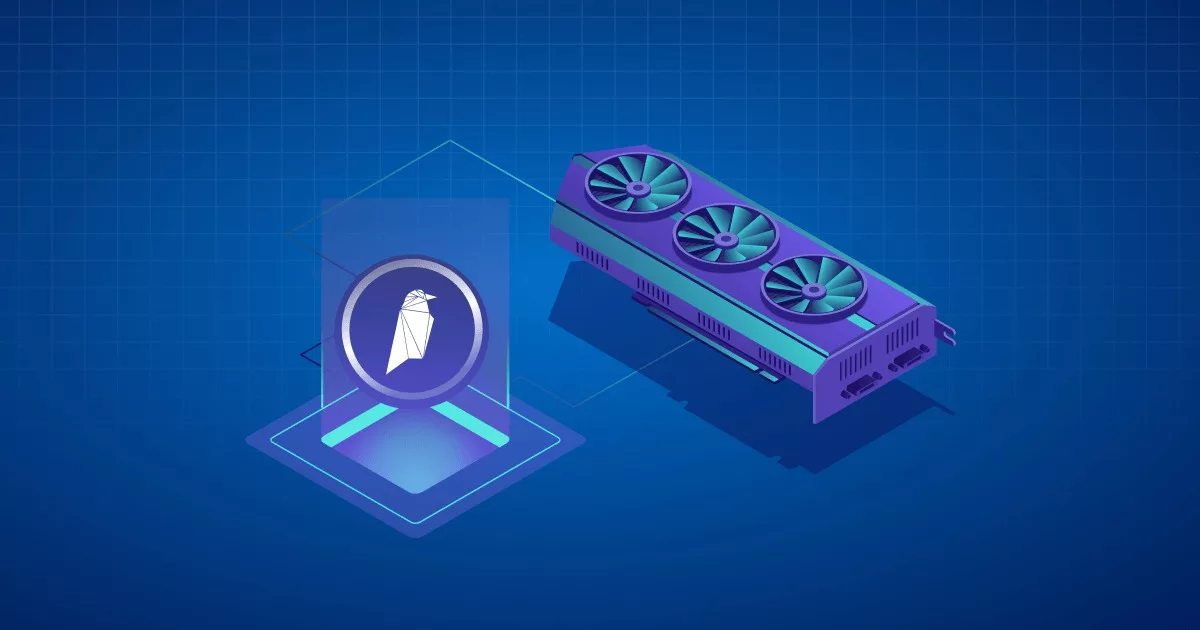
Cryptocurrency mining has become a potential way for individuals to earn passive income, and Ravencoin is one such crypto that provides this opportunity.
As of 2023, Ravencoin has grown in popularity and value, making it an attractive option for those looking to mine cryptocurrencies.
RVN Mining involves using specialized hardware and software to solve complex mathematical equations to validate transactions on the blockchain and earn rewards in the form of newly minted Ravencoin (RVN) tokens.
In this detailed guide, we will explore how to mine Ravencoin in 2023, including setting up a mining rig and optimizing your mining setup to achieve maximum efficiency.
What is Ravencoin (RVN)?
Ravencoin (RVN) is a peer-to-peer, decentralized cryptocurrency launched in 2018.
It is designed to securely and quickly transfer assets between individuals or entities, such as tokens and digital assets. It has gained popularity among crypto enthusiasts, especially those interested in asset issuance and tokenization.
Ravencoin uses the Proof-of-Work (PoW) consensus mechanism and is based on the Bitcoin codebase but has several modifications to improve its functionality.
One of the most significant changes is its mining algorithm, ‘KawPoW.’
KawPoW is ASIC-resistant, meaning it can be mined using consumer-grade hardware such as GPUs and requires less computational power. Thus, it provides better access to individual miners than Bitcoin, which requires specialized mining equipment.
Miners play a critical role in the Ravencoin network by validating transactions and adding them to the blockchain. This process ensures that the network remains decentralized, as no single entity can control the network.
Miners are incentivized to participate in the network through newly minted RVN coins, which are rewarded for their work. Currently, miners earn 2500 RVN for every block added to the blockchain.
Basics of Ravencoin (RVN) Mining
Ravencoin mining is crucial to keeping the network decentralized and secure and ensuring the release of new coins into circulation. It helps protect the network against a potential 51% attack.
A 51% attack happens when a single miner or group of miners controls over 51% of the total ‘hashrate,’ allowing them to maliciously spend or steal funds by altering the network.
So, what is a hashrate?
Hashrate refers to the amount of computing power a mining machine or rig has. This power solves complex mathematical algorithms and unlocks new transaction blocks.
Hashrate is measured in hashes per second (h/s), which represents the number of times the device can calculate the hash of a block. For example, a hashrate of 1,000 calculations per second equals one kilohash per second (KH/s), while 1 million calculations per second is one megahash per second (MH/s), and so on.
As more miners join the network, the computational power increases, resulting in a higher network hashrate. Currently, Ravencoin’s hashrate stands at 9.57 Th/s, which is 9.57 trillion hashes per second.
Therefore, the network’s security and robustness depend on a decentralized network of miners spread across the globe.
It is crucial to have a higher hashrate for two reasons,
- Firstly, it increases a miner’s chances of winning the block reward by giving them a better chance of competing with other miners on the network.
- Secondly, a higher hashrate is also essential for better network security. The network’s security is enhanced when more miners join it and dedicate their computational resources to mining.
Tokenomics of Ravencoin
Ravencoin had no pre-mine or initial coin offering (ICO) and is based on the Bitcoin codebase. However, the team modified it to implement a different mining algorithm.
Despite the changes, it retains certain features of Proof-of-Work protocols, like having a finite supply. In Ravencoin’s case, the maximum number of coins that will ever exist is fixed at 21 billion RVN. This is similar to Bitcoin’s fixed supply of 21 million BTC, albeit with more coins.
Another notable mining feature of Ravencoin is ‘halving.’
Halving is a pre-programmed event that reduces mining rewards by 50% after a certain number of blocks have been mined.
Ravencoin has set its block halving to occur every 2,100,000 blocks, approximately every four years. This means that the current block reward of 2,500 RVN will be cut to 1,250 RVN in 2026, and this reduction will continue until all coins have been mined.
RVN mining follows a 1-minute block time so that the mining difficulty will adjust accordingly. The difficulty level adjusts based on the amount of mining power used on the network, affecting mining profitability.
As prices rise, more miners are attracted to mine RVN, leading to a rise in difficulty and vice versa. But, the protocol’s coin generation limit ensures that mining RVN remains possible within the network’s hash power constraints.
Technicalities of RVN Mining
Below are the technical requirements for mining Ravencoin,
1. Processing Power
In the early days of mining, the CPU was the main component of your mining rig. CPU power was sufficient for basic math calculations, as the computing power needed was not as high as todays.
But, nowadays, a graphics processing unit (GPU) is required to mine most coins. GPUs offer more firepower for fast math calculations, which is crucial for modern mining.
In addition to CPUs and GPUs, miners also used field-programmable gate arrays (FPGAs), better suited for mining Bitcoin due to their higher processing speeds and lower power consumption. FPGAs packed more hashrate than single GPUs, giving miners an advantage.
Application-specific integrated circuit miners (ASICs) were then introduced, offering the most processing power for mining. However, ASICs are expensive and concentrate mining power in the hands of a few mining farms/pools, leading to increased centralization.
To prevent the use of these specialized mining machines, mining algorithms like KawPoW were designed to be ASIC-resistant.
2. Hashrate Requirement
To mine Ravencoin, your mining rig’s hashrate determines the number of calculations it can perform in a second.
For example, a GPU rig built with Nvidia’s 1070 Ti can achieve over 24 MH/s, and three such cards can provide a total of 72 MH/s, which can be used to mine 1 RVN. But, mining just one coin is impractical, making receiving a block reward more challenging.
Also, miners must consider the mining difficulty of Ravencoin, which measures the difficulty in finding a block and adjusts over time based on the network hashrate and block generation time.
When the network hashrate increases, meaning more miners participate, the difficulty adjusts up or down to maintain the one-minute block time. Currently, Ravencoin has a network difficulty of 102.41K. To give some perspective, the difficulty level reached an all-time high of 450K in April 2020.
3. Hardware Components
Mining Ravencoin is popular among miners who cannot afford expensive ASICs, as it is best mined using consumer-grade GPU hardware.
Furthermore, changes to the protocol have allowed miners with 3GB RAM graphics cards to mine RVN.
To mine Ravencoin, you can do it individually or join a mining pool, but you will need a good amount of hashrate to compete with other miners. For example, a single Nvidia GTX 1080 Ti graphics card can offer up to 45 MH/s, while a mining rig of six graphics cards can give you 270 MH/s.
However, it currently takes about 0.021 days to mint 1 RVN using a hashrate of 70MH/s at 580W and $0.10 electricity costs, which means you cannot solo mine a block of 5000 RVN with a single rig of 270 MH/s.
Attempting to assemble an operation of more than 30 Nvidia GTX 1080 Ti GPUs for solo mining could be costly, with each graphics card costing over $600.
Instead, you can assemble a smaller rig and combine your hashing power with other miners to get a share of the reward.
4. Cost Elements
When mining, the hardware components required, such as GPUs, power supply units, motherboards, and fans, account for the most significant expenses.
The total capital investment required to start a Ravencoin mining venture depends on the desired hashrate and electricity costs.
Once you have set up the mining rigs, electricity consumption is the primary cost.
To ensure profitability, it is recommended to set up the mining operation in an area where electricity per kilowatt costs less than $0.10.
Conclusion
RVN mining in 2023 is a fascinating process that requires dedication, patience, and a comprehensive understanding of the mining procedure. As Ravencoin continues to grow in popularity and value, mining Ravecoin cryptocurrency can be lucrative for those willing to put in the effort.
However, it’s important to remember that mining any cryptocurrency comes with risks and rewards.
It’s crucial to stay up to date with the latest developments and trends in the cryptocurrency industry and make informed decisions based on your circumstances and risk tolerance.





